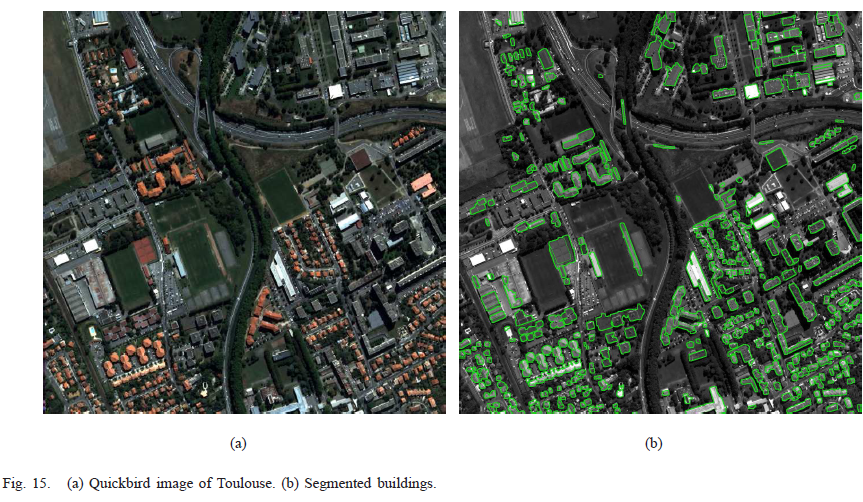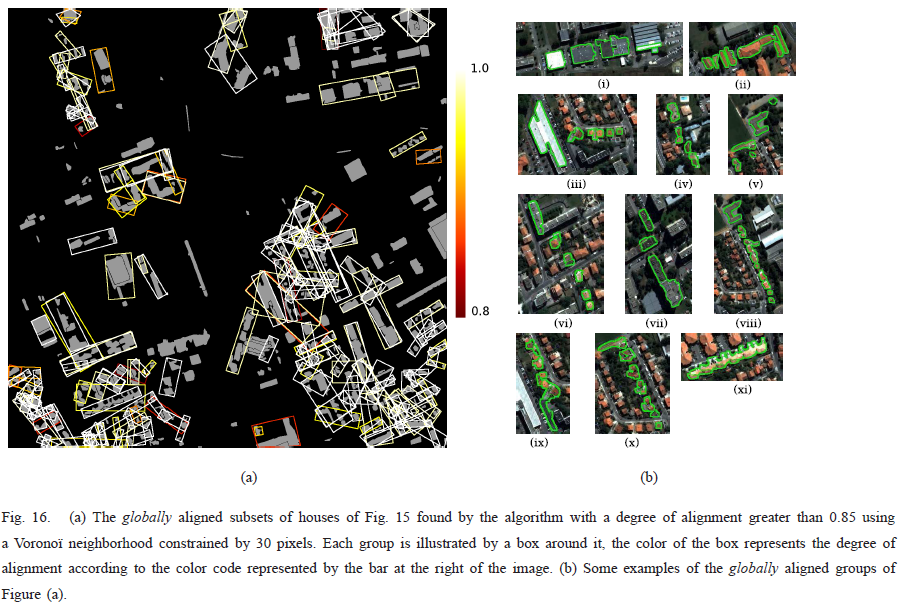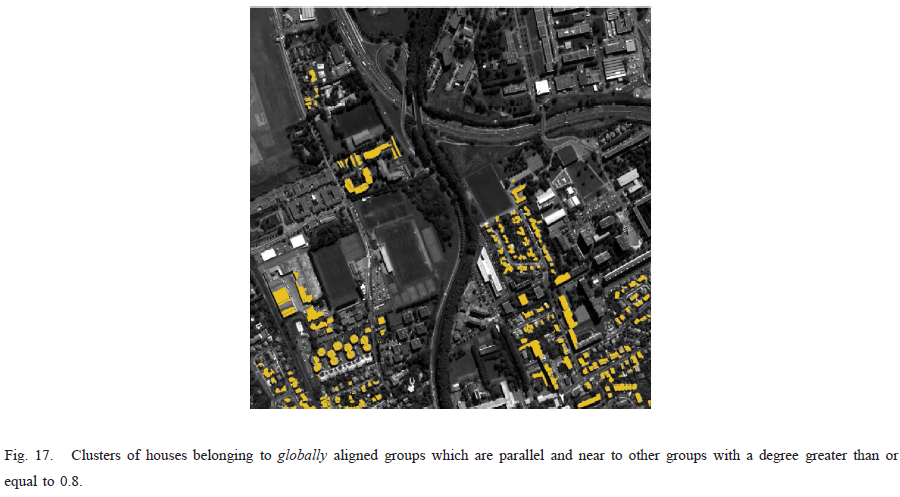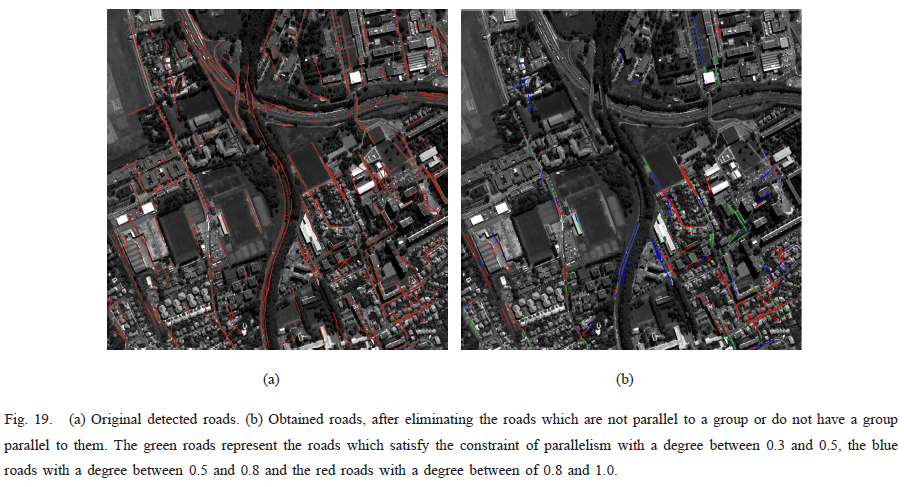Authors
Abstract
Alignment and parallelism are frequently found between objects in high resolution remote sensing images, and can be used to interpret and describe the observed scenes. In this work, we propose new representations of parallelism and alignment as fuzzy spatial relations, which capture the imprecision in the semantics of both relations. We propose two novel definitions of alignment between objects: local and global. In local alignment each object of the group is aligned with its neighbors, while in global alignment every object of the group is aligned to all other members. Both definitions consider each object as a whole and are based on relative position measures. They are robust with respect to segmentation errors. Furthermore, we propose an efficient graph-based method to determine which are the locally and the globally aligned groups of objects from a set of segmented objects. In addition, we propose a fuzzy definition for the parallel relation, which is also based on relative position measures, and is adequate to represent the parallelism between a globally aligned group of objects and another object or group of objects.
Illustrative examples on optical satellite images show the description power of these two relations and their combination for image interpretation.
References
- M.-C. Vanegas, I. Bloch and J. Inglada, Alignment and parallelism for the description of high resolution remote sensing images, IEEE Transactions on Geoscience and Remote Sensing, 51(6):3542-3557, 2013.
- M.-C. Vanegas, I. Bloch and J. Inglada, Detection of Aligned Objects for High Resolution Image Understanding, IEEE International Geoscience and Remote Sensing Symposium (IGARSS 2010), Honolulu, Hawai, USA, July 2010, pp. 464-467.
- M.-C. Vanegas, I. Bloch and J. Inglada, Searching aligned groups of objects with fuzzy criteria, IPMU 2010, Dortmund, Germany, June 2010, vol. LNAI 6178, pp. 605-613.
- C. Vanegas, I. Bloch, H. Maître et J. Inglada, Approximate Parallelism Between Fuzzy Objects: Some Definitions, International Workshop on Fuzzy Logic and Applications WILF, Palermo, Italy, Juin 2009, vol. LNAI 5571, pp. 12-19.
Source code
The code was developed within the Orfeo Toolbox (CeCILL licence). It is avalailable on request (email). We invite to cite the above references when using the code.
Illustrations




Acknowledgments
This work was partially founded by CNES-DLR-ENST Competence Center for Image Understanding and Information Extraction.


